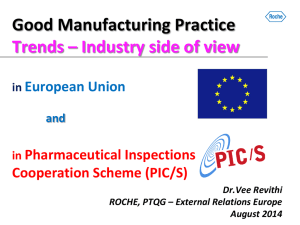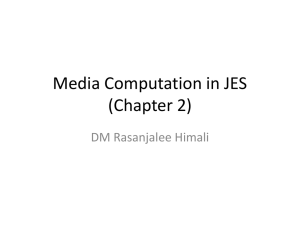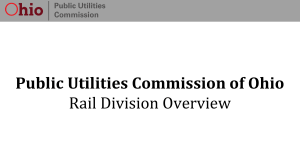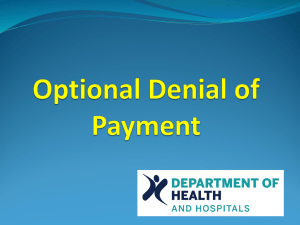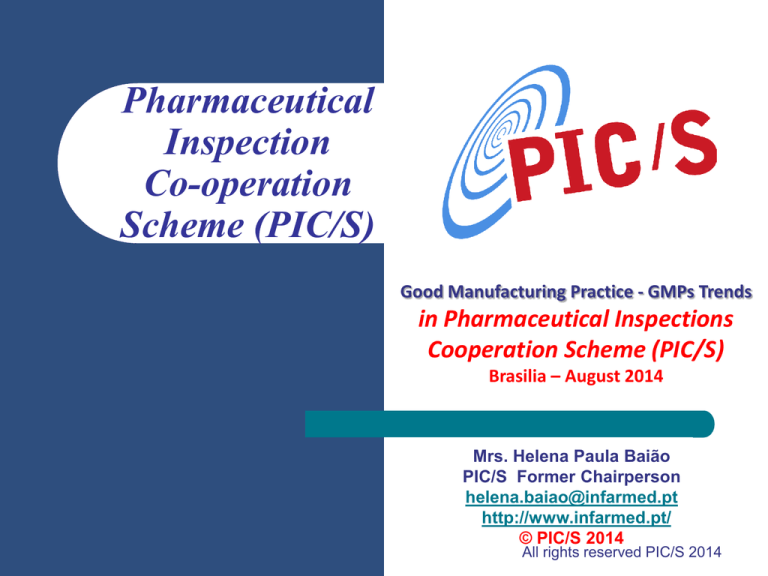
Pharmaceutical
Inspection
Co-operation
Scheme (PIC/S)
Good Manufacturing Practice - GMPs Trends
in Pharmaceutical Inspections
Cooperation Scheme (PIC/S)
Brasilia – August 2014
Mrs. Helena Paula Baião
PIC/S Former Chairperson
helena.baiao@infarmed.pt
http://www.infarmed.pt/
© PIC/S 2014
All rights reserved PIC/S 2014
Bom dia
Good Morning
Mrs. Helena Paula Baião
PIC/S Chairperson
helena.baiao@infarmed.pt
http://www.infarmed.pt/
All rights reserved PIC/S 2014
Overview
I.
About PIC/S & Mission & Goals & Quality Systems &
Guides & Recommendations & Seminars & Expert Circles & JVP &
JRP & training activities &Liaison with other organisations
II. Trends and Observations related to GMP
inspections
III. PIC/S Future & Philosophy
IV. Final Remarks
V. Acknowledgement
All rights reserved PIC/S 2014
I. PIC/S is ...
an international organisation
a non-profitable organisation
a non-political organisation
made up of regulators (inspectors)
The convention was signed in Geneva on 8 October 1970
All rights reserved PIC/S 2014
I. PIC/S Mission
“To lead the international development, implementation
and
maintenance
harmonised GMP
quality systems of
of
standards and
inspectorates in the field of medicinal products”.
“成立的宗旨
領導,擴展,實施, 藥品GMP法規標準協和、藥品稽查管理體系(稽查品質)一致化,
國際化 和全球化. “
While adapting to its growth and needs as well as to a constantly changing
GMP environment, PIC/S remains focused on what has made its success to
this day.
All rights reserved PIC/S 2014
I. Original Goals
Harmonised GMP requirements (*)
Mutual recognition of inspections
Uniform inspection systems
Training of Inspectors
Mutual
confidence (Trust)
(*) The difference is not so much in different GMP standards being used around
the world but in the interpretation of standards
All rights reserved PIC/S 2014
I. Achievement of PIC/S Goals
Developing and promoting harmonised GMP
standards and guidance documents
Assessing (and reassessing) GMP Inspectorates
Training competent authorities, in particular GMP inspectors
Facilitating the co-operation and networking
for competent authorities and international
organisations
All rights reserved PIC/S 2014
I. Quality System
requirements for Pharmaceuticals Inspectorates
Reference document : PI 002-3
Purpose : adopt a common standard for quality
system requirements in order to achieve
consistency in inspection standards
between National Pharmaceutical Inspectorates
and thus to facilitate the equivalence of
Inspectorates
All rights reserved PIC/S 2014
I. Obligations as a PIC/S Member
(1)
Payment of annual membership fee
(2) To attend PIC/S Committee Meetings – twice a year –
one in Geneva and the other one in a member
country (together with the annual seminar)
(3) To host or participate in the annual PIC/S Seminar
(4) To host or participate in PIC/S Expert Circles & JVP
& JRP
(5) To participate in PIC/S Sub-Committees (SC).
Active participation and contribution is the only way forward
All rights reserved PIC/S 2014
I. Information sharing inside PIC/S
Reports of GMP inspections
List of planned foreign inspections
List of inspectors
List of competencies within each inspectorate
Training events arranged by inspectorates
Rapid alerts and drug recalls
Surveillance activities
All rights reserved PIC/S 2014
46 PIC/S Members
(as of 1 July 2014)
10 PIC/S Applicants & Pre-Applicants
All rights reserved PIC/S 2014
PIC/S Members (Europe)
AUSTRIA
BELGIUM
CZECH REP. (Human & Vet)
CYPRUS
DENMARK
ESTONIA
FINLAND
FRANCE (Human & Vet)
GERMANY
GREECE
HUNGARY
ICELAND
IRELAND
ITALY
LATVIA
LIECHTENSTEIN
LITHUANIA
MALTA
NETHERLANDS
NORWAY
POLAND
PORTUGAL
ROMANIA
SLOVAK REPUBLIC
SLOVENIA
SPAIN
SWEDEN
SWITZERLAND
UKRAINE
UNITED KINGDOM (Human & Vet)
All rights reserved PIC/S 2014
I. Accession &
Pre-accession procedure
Useful Documents
Pharmaceutical Inspection Cooperation Scheme
(PIC/S
1/95)
Guidelines for Accession to PIC/S (PS/W 14/2011)
Questionnaire for Competent Authorities
(PS/W
1/2011)
Audit Checklist (PS/W 1/2005)
Recommendations on quality system requirements for
pharmaceutical inspectorates (PI 002)
All rights reserved PIC/S 2014
I. Accession &+ Pre-accession
Applicants being
assessed for membership
Brazil / ANVISA
Hong-Kong SAR /
PPBHK
Iran / MoH
Philippines / PFDA
Turkey / TMMDA
Applicants for Pre-Accession
Armenia / SCDMTE
Belarus / MoH
Chile / ISP
Kazakhstan / CCMPA
Mexico / COFEPRIS
interest in joining PIC/S
China / CFDA
Croatia / HALMED
Nigeria / NAFDAC
Russia / Roszdravnadzor
Saudi Arabia / SFDA
All rights reserved PIC/S 2014
I. PIC/S Training for GMP Inspectors
Annual Training Seminars
Training Courses for New Inspectors
Expert Circles
Joint Visits Programme (JVP) and Coached
Inspections Programme (CIP)
PIC/S - Industry Workshops
All rights reserved PIC/S 2014
I. Upcoming PIC/S Training Activities
PIC/S – IMB New Inspector Training Course which will be hosted
and run by Ireland / IMB from 16-19 June 2014 in Dublin (Ireland),
followed by a Train the Trainer course on 20 June 2014
(http://www.picscheme.org/various.php);
PIC/S – PDA (Parenteral Drug Association) Q7 Training Course, part
of the PIC/S International API Training Programme set up by the
PIC/S Expert Circle on API, which regularly delivers general API
training in several locations around the world. The next training
courses, open to inspectors and industry, will be held in Brussels
(Belgium), on 18-19 September 2014 and in Brasilia (Brazil), in
October 2014, in co-operation with Brazil / ANVISA
(http://www.picscheme.org/various.php)
PIC/S Advanced QRM Training Course for GMP inspectors, which
will be hosted by Japan / PMDA in Tokyo (Japan),
on 8-10 December
All rights reserved PIC/S 2014
2014, organised by the PIC/S Expert Circle on Quality Risk
I.
PIC/S Seminars
Qualification and Validation Ukraine, 2012
Global Supply Chains and Canada, 2013
GMP Compliance
“Dedicated
facilities or not ?”
France 2014
“Biopharmaceutical and biosimilars,
how to inspect?” Indonesia, 2015
All rights reserved PIC/S 2014
I.
Development of GMP
Guidance Documents
Usually initiated at end of PIC/S Seminars
PIC/S Working Group formed
Author prepares draft
Comments from Working Group
Comments from PIC/S Inspectorates
Comments from Industry
Endorsed by PIC/S Committee for general distribution
Simultaneous distribution by EMA (& vice versa)
All rights reserved PIC/S 2014
I. Relationship with EMA
歐洲藥物管理局 (European Medicine Agency, EMA)
Associated Partnership negotiated in 2007 (renewed in
2010)
EMA attends PIC/S Committee as a Associated Partner
organisation
A Harmonised Consultation Procedure
Since 8 May 2012 EMA and PIC/S signed an
agreement to “Harmonize the Consultation Procedure “ for
all GMP documents.
PIC/S-EU liaison officer attends Inspectors meetings at EMA
as an observer
All rights reserved PIC/S 2014
I. PIC/S Guides & Recommendations
PIC/S GMP Guide
Virtually identical to EC GMP Guide
(main difference = “Qualified Person” vs. “authorised person”)
Basic GMP Guide (Part I)
The PIC/S GMP Guide – PE 009-11 , into force on 1 March 2014.
Geneva, 31 January 2014: the PIC/S Committee has adopted by written procedure
the revision of the PIC/S GMP Guide (PE 009-11).
l
l
l
l
l
The following parts have been amended:
- Part II of GMP Guide (Q7A): Introduction of risk management principles
- Annexes:
* Revised Annex 2 (biological medicinal products for human use)
* Revised Annex 14 (products derived from human blood or human plasma)
All rights reserved PIC/S 2014
I.
PIC/S Guides & Recommendations
PIC/S GMP Guide (similar to EU GMP Guide)
PIC/S GMP Guide for Blood Establishments
PIC/S Guide to Good Practices for the Preparation of Medicinal
Products in Healthcare Establishments
Validation (master plan, IQ/OQ, process, cleaning)
Validation of Aseptic Processes
Inspection of Isolator Technology
Quality Systems for Inspectorates
Validation of Computerised Systems
PIC/S Aide –Memoire ON ASSESSMENT OF QRM
IMPLEMENTATION PI 038-1
PIC/S RECOMMENDATION ON RISK-BASED INSPECTION
PLANNINGPI-037-1
All rights reserved PIC/S 2013
I. PIC/S
Liaison with other organisations
The European Department for the Quality of Medicines (EDQM 歐洲
药品质量部) : Associated Partnership negotiated in 2007 (renewed
in 2010)
United Nations International Children‘s Emergency Fund (or known
as United Nations Children’s Fund, UNICEF, 聯合國儿童基金会(舊
称聯合國國際兒童緊急救援基金會 : Associated Partnership
negotiated in 2008
World Health Organisation, WHO 世界衛生組 織 : Co-operation
Arrangement negotiated in May 2009
International Conference on Harmonization,ICH (國際協调會)
European Commission (DG Health & Consumers) 歐盟執委會
Association of South East Asian Nations (ASEAN);
All rights reserved PIC/S 2014
I. PIC/S liaises with major
Professional Organisations
PIC/S liaises with major professional organisations such
as ISPE and PDA, active in the field of
interpretation & guidance documents as well as
training;
The support of industry associations
and professional organisations to the
goals of PIC/S is crucial.
All rights reserved PIC/S 2014
I. PIC/S
Liaison with other organisations
In the PIC/S Blueprint,
Co-operation between PIC/S and other organisations
should be based on the principle of complementarity.
Where PIC/S Participating Authorities are
already actively co-operating, PIC/S as an
organisation should not duplicate Members’
efforts.
All rights reserved PIC/S 2014
II. PIC/S's perspectives
Trends and Observations related to inspections
US/FDA makes their inspection results available to the public
due to the Freedom of Information Act (FOI).
However,
very
rarely,
inspection
results
of
European
supervisory authorities are accessible in any public domain
except analysis of regulatory / GMP inspection findings that
are periodically published by UK/MHRA and European
Medicines Agency (EMA).
All rights reserved PIC/S 2014
II.
PIC/S's perspectives
Trends and Observations related to inspections
At PIC/S level, a similar exercise has never been done before in
spite of the fact that PIC/S is an international organization with
membership spread across all the 6 continents globally but as
part of the PIC/S Seminar 2011 on “Good Pharmaceutical
Inspection Practices”, developed a worshop
“Similarities and differences for top 10 deficiencies cited by PIC/S
Members;
Hans Smallenbroek (Netherlands/IGZ) and Boon Meow Hoe (Singapore/HSA)
All rights reserved PIC/S 2014
II. PIC/S's perspectives
Trends and Observations related to inspections
Methodology
Questionnaire invite all PIC/S Participating Authorities and
applicants to offer data.
1. Top ten & most frequently cited categories of GMP deficiencies
2. Top five &f most severe GMP deficiencies (critical and/or major)
The scope of the survey was defined for GMP inspection findings of finished
product dosage form manufacturers only, including medicines for veterinary use
and investigational medicinal products, if applicable. Inspections of Active
Pharmaceutical Ingredients (API) were out of the scope of this survey.
All rights reserved PIC/S 2014
II. PIC/S's perspectives
Trends and Observations related to inspections
PIC/S did not have a formal model “Categories of
GMP Deficiencies”, the model of “Categories of GMP
Deficiencies” used by UK/MHRA was used as a
standard template.
However, flexibilities were given to PIC/S Participating
Authorities and applicants which might wish to use their
own model of “Categories of GMP Deficiencies”.
Inspection findings were classified into the categories
“critical:”, “major” and “others or minor”
All rights reserved PIC/S 2014
II. Trends and Observations related to inspections
Analysis and summary of raw data
Summary of top 10 most frequently cited categories of GMP deficiencies
(1) Documentation - manufacturing 24
(2) Design and maintenance of premises 22
(3) Documentation - quality systems elements / procedures 20
(4) Personnel issues - training 19
(5) Design and maintenance of equipment 18
(6) Cleaning validation 14
(6) Process validation 14
(6) Product Quality Review 14
(7) Supplier and contractor audit 13
(8) Calibration of measuring + test equipment 12
(9) Equipment validation 11
All rights reserved PIC/S 2014
TOTAL NUMBER OF DEFICIENCIES PER GROUP OF
TOP TEN MOST FREQUENTLY CITED DEFICIENCIES
All rights reserved PIC/S 2014
Total number of deficiencies per group of
top ten most frequently cited deficiencies
All rights reserved PIC/S 2014
II. Trends and Observations related to inspections
Analysis and summary of raw data
Total number of deficiencies per group
of top five most severe deficiencies
(1) Production 44 (27%)
(2) Quality system 32 (20%)
(3) Premises and equipment 28 (17%)
(4) Validation 22 (14%)
(5) Quality control 14 ( 9%)
(6) Regulatory issues 9 ( 6%)
(7) Materials management 8 ( 5%)
All rights reserved PIC/S 2014
(8) Personnel issues 5 ( 3%)
Summary of top 5 most severe GMP deficiencies
Documentation-manufacturing
Regulatory issues - non compliance qwith marketing authorisation
Documentation - QS elements / procedure
Investigation of anomalies
Cleaning Validation
Process Validation
Batch release procedures
Sterility assurance
Design and maintenance of equipment
Contamination, potential for (chemical, physical, microbial)
Design and maintenance of premises
15
10
5
0
15
12
11
9
9
9
8
7
7
5
5
All rights reserved PIC/S 2014
Summary of top 5 most severe GMP deficiencies
TOTAL NUMBER OF DEFICIENCIES PER GROUP OF TOP FIVE MOST
SEVERE DEFICIENCIES
All rights reserved PIC/S 2014
II. Trends and Observations related to inspections
Review similarities and differences for the top 10 deficiencies
Comparison between summary of groups
Most severe deficiencies
Most frequently cited
deficiencies
Production 24%
Quality system 20%
Quality control 14%
Premises + equipment 14%
Validation 12%
Personnel issues 8%
Materials management 7%
Regulatory issues 1%
Production 27%
Quality system 20%
Premises + equipment 17%
Validation 14%
Quality control 9%
Regulatory issues 6%
Materials management 5%
Personnel issues 3%
All rights reserved PIC/S 2014
II. Trends and Observations related to inspections
GENERAL OBSERVATIONS
Differences
PIC/S Participating Authorities use different GMP
deficiencies classification model:
Some used the model developed by UK/MHRA;
Some use the PIC/S GMP Part I model i.e. in according to
the 9 Chapters and Annex 1.
Some have their own classification methodology.
Some members did not have formal analysis trending on
such GMP deficiencies.
All rights reserved PIC/S 2014
II. Trends and Observations related to inspections
Review similarities and differences for the top 10 deficiencies
GENERAL OBSERVATIONS
Some
of the most frequently cited GMP
deficiencies may due to easy detection as part of
the inspection process. (E.g. Documentation – manufacturing -- #1
most frequently cited deficiency).
The
design and maintenance of premises ranked
as #2 most frequently cited deficiency may relate to
aged buildings or saving on maintenance budget.
All rights reserved PIC/S 2014
II. Trends and Observations related to inspections
Review similarities and differences for the top 10 deficiencies
GENERAL OBSERVATIONS
The 10 most frequently cited GMP deficiency
classes meant that the industry is weak in these areas
and inspectors should communicate more
effectively and efficiently to the industry on such
weaknesses.
Different
level of details of the deficiency classes
model observed. A model that could be accepted by
most PIC/S PAs may be required
All rights reserved PIC/S 2014
II. Trends and Observations related to inspections
Common model recommendation
Adopt this exercise at PIC/S level in an annual
basis.
Output may be used as a Training Need Analysis to
identify common specific GMP areas to be focused on training and to
pull all resources together within PIC/S.
PIC/S
may wish to consider to develop a PIC/S
common GMP deficiencies classification model
May 2013, established Working Group
coordinated by TGA (...)
All rights reserved PIC/S 2014
II. Trends and Observations related to inspections
Data trending recommendation
All
PIC/S Participating Authority (PA)
should consider to implement and put in
place such exercise for analysis and
trending within a defined period (e.g.
annually) and subsequently, for trending
across different years.
All rights reserved PIC/S 2014
II. Trends and Observations related to inspections
Conclusion
There is a correlation between the most
frequent GMP Deficiencies Classes and the
most severe GMP Deficiencies Classes.
There is no significant differences among
regions
This implies that there is harmonisation
across all PIC/S Participating Authorities.
All rights reserved PIC/S 2014
II. Trends and Observations related to inspections
PIC/S reviews deficiencies
found during inspections of API manufacturing facilities
PIC/S facilitates international
technical training on relevant
topics of interest.
One of the most active bodies within
PIC/S is the API Expert Circle.
All rights reserved PIC/S 2014
II. Trends and Observations related to inspections
PIC/S reviews deficiencies
found during inspections of API manufacturing facilities
PIC/S reviews deficiencies found
during
inspections
of
API
manufacturing facilities, harmonizes
GMP
standards,
and
provides
training for inspectors worldwide.
Carmelo Rosa chair of the PIC/S API Expert Circle, others
All rights reserved PIC/S 2014
II. Trends and Observations related to inspections
PIC/S reviews deficiencies
found during inspections of API manufacturing facilities
Efforts and strategic plan are focused in 4 key areas:
identifying regions and countries where the
inspectorate and industry have greater needs of GMP
training in APIs;
providing the inspectorate with up-to-date information
on advanced or complex APIs manufacturing processes;
through partnership with technical organizations
and established procedures, ensuring that the
inspectorate is exposed to new technology
All rights reserved PIC/S 2014
II. Trends and Observations related to inspections
PIC/S reviews deficiencies
found during inspections of API manufacturing facilities
Five API Expert Circles have been held,
in September 2012, in Washington DC, where
approximately 130 inspectors were trained on sterile APIs
and biotechnology manufacturing.
The 6th Expert Circle on APIs will be held in Rome on May
19-21, 2014 on the topic of API process validation and
contemporary issues. (…)
All rights reserved PIC/S 2014
II. Trends and Observations related to inspections
PIC/S reviews deficiencies
found during inspections of API manufacturing facilities
Since the implementation of Q7,
manufacturers
appear
to
have
understanding of GMP principles.
most API
a
better
Many firms have good quality systems, process understanding,
seek opportunities for optimization, have robust change-controls systems, and have
good laboratory controls and procedures to facilitate knowledge management.
On the other hand, inspections also reveal that some API
manufacturers continue to struggle with achieving sustainable
compliance with GMP requirements.
All rights reserved PIC/S 2014
II. Trends and Observations related to inspections
PIC/S reviews deficiencies
found during inspections of API manufacturing facilities
Inspections of API facilities, conducted by PIC/S members,
have recently been reporting critical
deficiencies related to laboratory controls,
records/investigations, quality systems,
equipment cleaning/maintenance, and
process validation.
All rights reserved PIC/S 2014
II. Trends and Observations related to inspections
PIC/S reviews deficiencies
found during inspections of API manufacturing facilities
Data integrity issues
PIC/S members and partners have also noted an increase in findings
of data-integrity practices during inspections of API sites.
These deficiencies include:
recording data in logbooks, falsification of batch records and test
results, pretesting samples and ignoring or not investigating out-ofspecification results,
blending or mixing API batches that failed to meet the established
released specifications with batches that met the required final
specifications,
lacking the necessary controls in handling and managing critical data,
and entering manufacturing activities on records before they had
occurred.
All rights reserved PIC/S 2014
II. Trends and Observations related to inspections
PIC/S reviews deficiencies
found during inspections of API manufacturing facilities
Outsourced operations and the changing
face of API manufacturing
With the increase in the outsourcing of APIs by
sponsors/drug applicants/finished drug product
owners/contract givers (party that purchases APIs), there
is more concern about how the roles and
responsibilities of each party are established and
managed.
All rights reserved PIC/S 2014
II. Trends and Observations related to inspections
PIC/S reviews deficiencies
found during inspections of API manufacturing facilities
.
During PIC/S’ API Expert Circles, inspectors are trained
on new technology, quality trends, and critical
deficiencies and how to detect problems
that may affect the quality of the APIs produced
and that may impact the finished drug products,
and subsequently affect the patients who
consume these medicines.
All rights reserved PIC/S 2014
II. Trends and Observations related to inspections
PIC/S reviews deficiencies
found during inspections of API manufacturing facilities
Conclusion
A regulator’s role is to determine whether firms are
operating in sustainable compliance with GMP for APIs,
pursuant to ICH Q7.
Bearing in mind that inspections are limited by time and other
resource constraints, regulators rely heavily on manufacturers
to implement and maintain appropriate quality systems and
processes to ensure that all APIs produced meets the
required quality standards.
All rights reserved PIC/S 2014
III.
Future of PIC/S &
New Projects
Expansion to cover Good Distribution
Practices - GDP PIC/S adopted a Guide on Good
Distribution Practice (GDP), into force since 1 June
2014; Good Clinical Practices - GCP and Good
Pharmacovigilance Practices - GVP (new Working
Group);
PIC/S
Inspectorates Academy;
Other needs of Agencies (e.g. biosafety, medical
devices, etc.).
All rights reserved PIC/S 2013
III. PIC/S Future
Recent Developments
Accession of Japan’s MHLW, PMDA & Prefectures and of South
Korea’s MFDS (July 2014)
New PIC/S GDP Guide, based on EU GDP Guide (June 2014)
Revision of PIC/S GMP Guide (Part II of GMP Guide (Q7A), Annex
2 and 14) (March 2014)
Revision of PIC/S Guide to Good Practices for the Preparation of
Medicinal Products in Healthcare Establishments (new Annex 3 on
radiopharmaceuticals) (March 2014)
New PIC/S Organisational Sub-Committee Structure (Jan 2014)
Accession of United Kingdom’s Veterinary Agency VMD (Jan 2014)
Accession of Chinese Taipei’s TFDA and New Zealand’s Medsafe
(Jan 2013)
All rights reserved PIC/S 2014
III. PIC/S Future
New PIC/S Organisational
Sub-Committee Structure
To reply to PIC/S’s growing membership, a new SubCommittee structure has been developed and come
in force 1st January 2014, in order to:
•
Favour the participation of all PIC/S Participating Authorities
•
Establish a more participative and efficient organisation of
PIC/S, where each Sub-Committee will be responsible for its
respective core areas and will take the lead in developing
policies.
•
Among the Sub-Committee Members, 57% are from non-EU
PIC/S Participating Authorities, reflecting the fact that PIC/S has
become less of an Eurocentric and an ever more global
international organisation.
All rights reserved PIC/S 2014
III.
PIC/S Future
PIC/S new structure
as of 1 January 2014
All rights reserved PIC/S 2014
PIC/S Executive Bureau
-
-
Joey Gouws (South Africa / MCC), PIC/S Chairperson;
Paul Hargreaves (UK / MHRA), PIC/S Deputy Chairman and Chair of
the Sub-Committee on Budget, Risk and Audit (SCB);
Helena Baião (Portugal / INFARMED IP), immediate former
Chairperson;
Boon Meow Hoe (Singapore / HSA), Chair of the Sub-Committee on
Training (SCT);
Alexander Hoenel (Austria / AGES), Chair of the Sub-Committee on
Expert Circles (SCEC);
Jacques Morénas (France / ANSM), Chair of the Sub-Committee on
Strategic Development (SCSD);
Anne Hayes (Ireland / IMB), Chair of the Sub-Committee on
Compliance (SCC);
Paul Gustafson (Canada / HPFBI), Chair of the Sub-Committee on
GM(D)P Harmonisation (SCH);
Tor Gråberg (Sweden / MPA), Chair of the Sub-Committee on
All rights reserved PIC/S 2014
Communication (SC COM).
IV. Final Remarks
Trends and Needs
There is a need
Of Training for regulators and industry
for adequate expertise at National and Global level (at a time of
limited resources)
There is a need to share knowledge with the network of
Assessors and Inspectors (Training & Guidance) incl.
discussions before, during & after assessment
For appropriate continuous dialogue between regulators and
industry
All rights reserved PIC/S 2014
IV. Final Remarks
Trends and Needs
There is a need
better use of international cooperation opportunities in order to
achieve a better use of resources through better communication
and collaboration in areas of common interest
Entails the use of :
Science-based Policies and Standards
Risk-based orientation
To ensure Public Health Protection
All rights reserved PIC/S 2014
IV. Final Remarks
Conclusions
“PIC/S is continuously exploring ways to
facilitate
the harmonization of GM(D)P and
to adapt to a beautiful but constantly changing
world”
Trust
& Co-operation & Communication
Reason for PIC/S’ success: mandate & mission still valid today
Increasingly becoming and acting as a “global player”
All rights reserved PIC/S 2014
V.
Acknowledgement
Mr. Boon Meow Hoe (HSA, Singapore)
(Chinese version)
Chair of the Sub-Committee on Training (SCT)
Mr. Hans Smallenbroek (Netherlands/IGZ)
PIC/S Former Chair
Speakers, workshop facilitators, participants, “Global Supply
Chains and GMP Compliance”, Canada Seminar 2013
Mr. Daniel Brunner; Mr. Jeffrey Hodgson
PIC/S Secretariat
all those who directly or indirectly contribute to PIC/S Goals and
make them possible
All rights reserved PIC/S 2013
PIC/S Secretariat
14 rue du Roveray
CH - 1207 GENEVA
Tel: +41.22 738 92 16
Fax:+41.22 738 92 17
Email:info@picscheme.org
Web site: www.picscheme.org
All rights reserved PIC/S 2014
The protection of public health and
of the patient is our common goal
Thanks for the attention


